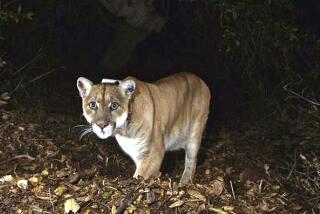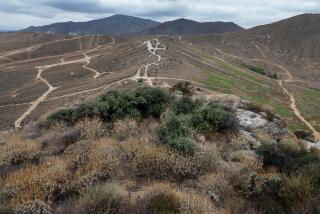Development
- Share via
Re “From Desert to a Sea of Suburbia,” Dec. 19.
The article inaccurately implied that prior to 1900, the Valley was simply an empty and inactive landscape. Nothing could be further from the truth.
Prior to settlement, the vast flatness of the Valley supported a native prairie of wildflowers and grasses that were adapted to ephemeral rainfall and long, hot summers. This prairie vegetation was habitat to an incredible diversity of native wildlife: grizzly bears, pronghorns, jack rabbits, badgers, ground squirrels, golden eagles, condors, ferruginous hawks and short-eared owls, to name just a few. The edges of this prairie interdigitated with the oaks, walnuts and chaparral shrubs of the surrounding mountains, and the middle of the Valley was dissected by seasonal watercourses (Tujunga Wash, Bull Creek, the great Los Angele River and others) that provided important habitat for migrating birds.
The wild and natural prairie of the Valley is lost forever and mostly forgotten. What a sad consequence and high price to pay for a century of development.
PAULA M. SCHIFFMAN
Biology Professor
Cal State Northridge
More to Read
Sign up for Essential California
The most important California stories and recommendations in your inbox every morning.
You may occasionally receive promotional content from the Los Angeles Times.










